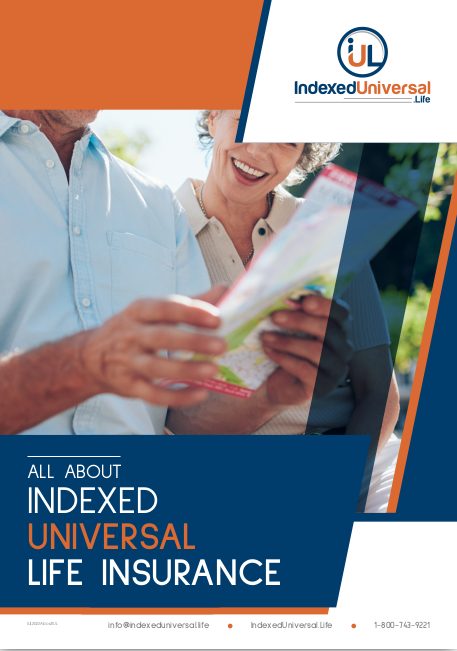
Key Takeaways
-
Indexed Universal Life (IUL) offers stable cash value growth tied to market indexes with limited downside risk.
-
Variable Universal Life (VUL) provides potentially higher returns through direct market investments but includes greater volatility and risk.
Understanding Your Options: Indexed vs. Variable Universal Life
Deciding on life insurance isn’t always straightforward. Two popular choices, Indexed Universal Life (IUL) and Variable Universal Life (VUL), offer unique benefits and challenges. Before making a decision, it’s crucial to understand how these policies differ and align with your financial goals and comfort with risk.
Let’s explore five essential aspects you should compare before deciding.
1. Growth Potential and Risk Exposure
Indexed Universal Life (IUL)
IUL policies provide cash value growth tied to the performance of a specific market index, like the S&P 500. Here’s how it typically works:
-
Growth Cap and Floor: Your returns have a predetermined cap, which means your earnings can’t exceed this limit, even if the market performs exceptionally well. Conversely, there’s a floor protecting your cash value from negative returns when the market dips.
-
Risk Exposure: Because of the floor, you experience minimal risk of losing cash value due to market downturns. This stability appeals if you’re risk-averse or nearing retirement.
Variable Universal Life (VUL)
VUL policies allow you to invest directly into mutual fund-like subaccounts, making the growth potential virtually limitless but with increased volatility:
-
Market-Dependent Returns: Your policy’s cash value fluctuates directly with market performance. Good market years can lead to substantial gains, but downturns can significantly decrease your cash value.
-
Risk Exposure: VUL lacks the protective floor of an IUL. You must be comfortable accepting significant financial fluctuations and potential losses, especially during extended market declines.
2. Flexibility in Investment Choices
Indexed Universal Life (IUL)
IUL investment options are simpler and predetermined:
-
You cannot directly invest in individual stocks or funds. Your policy’s performance mirrors a market index chosen at policy initiation.
-
You can occasionally switch between different indexes, but your investment flexibility remains limited compared to VUL.
Variable Universal Life (VUL)
VUL policies offer extensive flexibility and control over your investment selections:
-
You can actively manage your subaccounts, moving money among different asset classes like equities, bonds, or balanced funds.
-
This flexibility allows you to strategically adjust your investment strategy throughout your life based on your changing financial situation and goals.
3. Cost Structures and Fees
Indexed Universal Life (IUL)
Understanding costs is vital, and IUL policies typically include:
-
Insurance Costs: Standard mortality and administration fees.
-
Cap Rates and Participation Rates: Your returns are influenced by these rates set annually by your insurer. Higher fees or adjustments can indirectly impact your earnings.
Variable Universal Life (VUL)
VUL policies have more intricate fee structures:
-
Subaccount Management Fees: Similar to mutual fund expense ratios, these fees vary significantly depending on your selected investments.
-
Insurance and Administrative Costs: Often higher due to the complexity and active management of investment options.
Because of potentially higher fees, it’s crucial to regularly monitor and assess your investment selections in a VUL policy.
4. Cash Value Access and Withdrawals
Indexed Universal Life (IUL)
IUL policies provide straightforward options for accessing cash value:
-
Tax-Advantaged Loans: You can borrow against your cash value without immediate tax implications, as long as the policy remains active.
-
Limited Withdrawal Options: Direct withdrawals may affect your death benefit and policy guarantees, so cautious planning is essential.
Variable Universal Life (VUL)
VUL offers similar, yet more complex cash access options:
-
Flexible Withdrawals: You can withdraw or borrow from your cash value, but this could significantly impact your investment performance and death benefits, especially in market downturns.
-
Potential Tax Implications: Gains withdrawn beyond your policy basis could be taxable, making timing crucial when accessing funds.
5. Suitability Based on Financial Goals
Indexed Universal Life (IUL)
IUL policies are ideal if you:
-
Desire stable, modest growth with downside protection.
-
Prioritize predictable policy performance and peace of mind over maximum returns.
-
Seek straightforward management without frequent investment adjustments.
Variable Universal Life (VUL)
VUL policies suit those who:
-
Aim for higher growth potential and are comfortable with risk.
-
Prefer active involvement in managing investment options and regularly reassessing financial strategies.
-
Understand market dynamics and willingly accept potential volatility to pursue substantial long-term rewards.
Which Policy Aligns Best With Your Financial Future?
Choosing between IUL and VUL ultimately hinges on your financial objectives, risk tolerance, and comfort with complexity. IUL policies offer stability and predictability, ideal if security is your primary concern. VUL policies appeal to risk-tolerant investors who actively manage their financial futures and are comfortable with market fluctuations.
When evaluating these options, carefully assess your financial horizon—whether 10, 20, or 30 years ahead—to determine the most appropriate policy type. Consider your long-term goals, your expected retirement timeline, and your family’s financial security.
Before making your final decision, discuss your goals and concerns with a licensed life insurance advisor to better understand how each policy fits into your broader financial plan. Taking the time to analyze these five crucial aspects can significantly impact your long-term financial success and peace of mind.
Making Your Final Decision: A Thoughtful Approach
Deciding between Indexed Universal Life and Variable Universal Life insurance requires a thoughtful assessment of your financial objectives, risk tolerance, and preferred level of investment involvement. By comparing growth potential, flexibility, costs, cash access, and overall suitability to your lifestyle, you’ll be better positioned to select the life insurance policy that best meets your needs.
Remember, life insurance is a long-term commitment. Evaluate regularly, adapt as needed, and ensure your coverage continuously aligns with your evolving financial journey.





